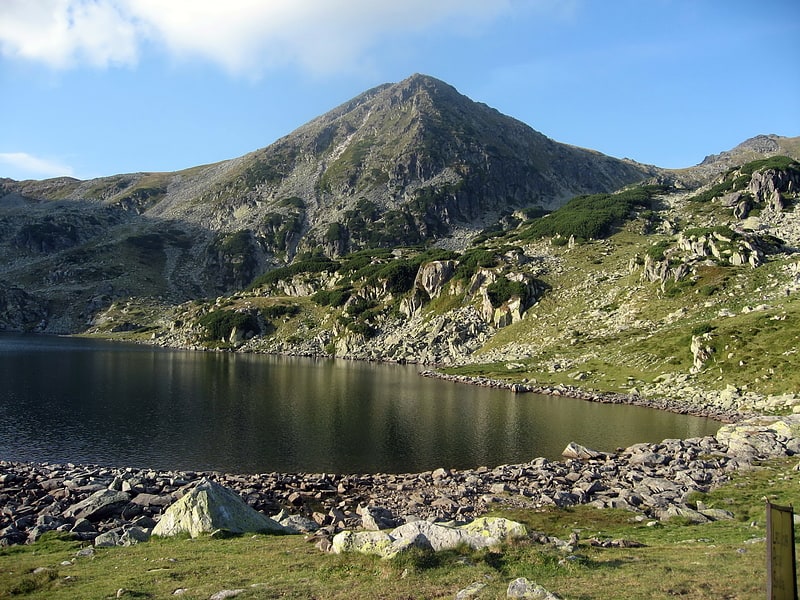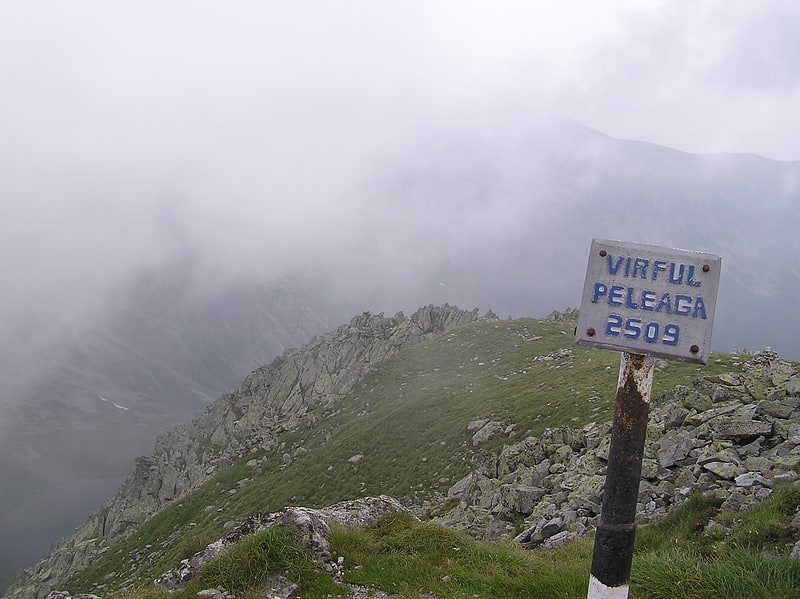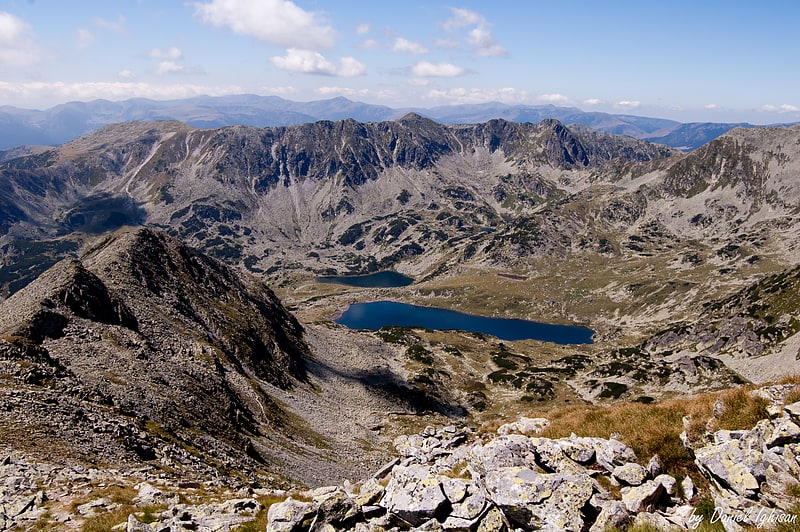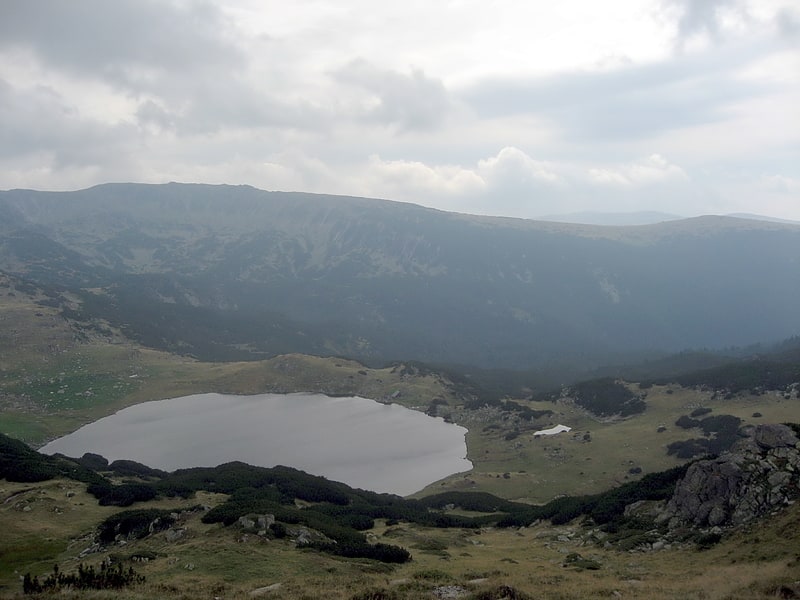Discover 5 hidden attractions, cool sights, and unusual things to do in Retezat National Park (Romania). Don't miss out on these must-see attractions: Bucura Lake, Peleaga, and Păpușa. Also, be sure to include Retezat Mountains in your itinerary.
Below, you can find the list of the most amazing places you should visit in Retezat National Park (Gorj).
Table of Contents
Bucura Lake

Also known as: Lacul Bucura
Scenic glacier lake for camping and hiking. Lake Bucura is a glacier cirque lake, situated in the Retezat Mountains, in Romania. It is located south of the main ridge, at the base of Peleaga Peak, and at an altitude of about 2,040 m.
It is the largest glacier lake in Romania, having an area of over 105,000 square metres. It is 550 m in length, 160 m in width on average, and 225 m maximum width, for a perimeter of 1,390 m. The maximum depth is 15.5 m, and the volume 625,000 m³.[1]
Peleaga

Also known as: Munţii Retezat
Hiking spot in the Retezat Mountains. Peleaga is a mountain in Romania. It is the highest point in the Retezat Mountains with a summit elevation of 2,509 metres above sea level. Peleaga is located in Hunedoara County, and lies within the historical region of Transylvania.
In addition to its highest peak Peleaga, the Retezat Mountains, part of the Southern Carpathians, are home to some of the highest massifs in Romania. Other important peaks in the range are Păpușa (Vârful Păpușa) and Retezat Peak (Vârful Retezat). The Retezat Mountains have many glacial lakes, including the largest one in Romania, Bucura Lake (Lacul Bucura), which covers 8.9 ha (22 acres) and is situated at an elevation of 2,030 m (6,660 ft). The area also contains the Retezat National Park, Romania's first national park.[2]
Păpușa

The Retezat Mountains are some of the highest massifs in Romania, being part of the Southern Carpathians. One of the important peaks is Păpuşa, with a height of 2,508 metres.
The Retezat Mountains have many glacial lakes, including the largest one in Romania, Bucura Lake (lacul Bucura), which covers 8.9 hectares (22 acres) and is situated at an altitude of 2,030 metres (6,660 ft). The area also contains the Retezat National Park, Romania's first national park.[3]
Retezat Mountains

Also known as: Munții Retezat
The Retezat Mountains are one of the highest massifs in Romania, being part of the Southern Carpathians. The highest peak is Peleaga, at an altitude of 2,509 metres. Other important peaks are Păpușa and Retezat Peak. The name means "cut off" in Romanian.[4]
Zănoaga Mare Lake

Lake Zănoaga Mare is a glacial lake located in the Retezat Mountains, part of the Retezat-Godeanu mountain group of the Southern Carpathians. It is the deepest lake of its type in the country, its maximum depth being 29 m. It is a lake formed in a glacial cirque.
Situated in the glacial caldera of the Judelui, on the southern slope of the Sesele mountain, at an altitude of 1997 m, the lake has a circular shape, with a maximum length and width of 360 and 260 m respectively, and a perimeter of 875 m, thus covering an area of 6.0 ha and a water volume of 693000 m3.
Pleistocene Quaternary glaciations in the Carpathians left numerous traces: calderas (glacial cirques), hanging valleys, U-shaped and stepped valleys, moraines and glacial lakes. Such traces, which have been attributed to the last two glaciations, Riss and Wurm, can be found in the Rodnei Mountains, the Călimani Mountains, the Bucegi Mountains, the Făgăraș Mountains, the Iezer-Păpușa Mountains, the Parîng Mountains, the Retezat Mountains, the Godeanu Mountains and the Țarcu Mountains.
In general, the lakes were carved by glaciers into the hard rock of mountain massifs, at the mouths of valleys or even in valleys, forming glacial cirque and valley lakes. Most formed in the irregularities created by the frontal and lateral moraines of the caldera glaciation.
Circus lakes have the largest share, they are small in area and shallow, but cases with surprising depths are also known. Glacial cirques are somewhat circular in shape and are found close to the mountain ridge at the mouth of valleys. Snow accumulated and turned to ice at the valley mouths by undercutting has formed depressions bounded at the bottom by glacial thresholds. This type of lake is found in every mountain range that has been affected by glaciation: in the Rodnei Mountains, the Făgăraș Mountains and the Retezat Mountains (Bîlea, Podragu, Capra, Buda, Bucura, Zănoaga lakes).
Circus lakes are not only found isolated at the mouth of a valley. In some larger, branching upper basins, suites of circuses have developed, called circus complexes (e.g. Bucura in the Retezat Mountains). Another form found in glacial relief is that of stepped cirques, developed on the same valley axis as a result of the succession of glacial phases.